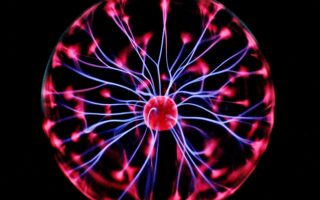How trauma healing can succeed through neurophilosophy and body psychotherapy
Author: Gabriella Rist
Category: Psychology, Trauma
Issue: No. 97
The search for healing led the author, herself affected by trauma, to neurophilosophy and body psychotherapy. She discovered the ancient wisdom of yoga as a path to healing and combined it with findings from brain research and numerous psychological approaches. She emphasizes that all approaches must be trauma-sensitive so as not to reinforce the trauma.
Imagine you could heal your deepest wounds by using the potential of your brain. Does that sound too good to be true? Well, there are two emerging disciplines that promise just that – neurophilosophy and body psychotherapy.
The importance of holistic healing of trauma
In our modern society, the issue of trauma and the associated effects on health and well-being is becoming increasingly important. More and more people are looking for holistic approaches to deal with and heal from their traumatic experiences.
In our world, where we still often tend to think of body, soul and mind as separate entities, neurophilosophy opens up a new understanding of how our physical experiences and mental wellbeing are connected. Body psychotherapy also allows us to heal the body with a focus on the mental impact.
Why do we need all this? Trauma – especially interpersonal trauma from childhood – can become deeply embedded in our nervous system and brain. They often leave behind old and encrusted traces that influence our ways of thinking, emotions, behavioral patterns and anatomy. They literally create shards or fragments both in our ego perception and in our body.
Neuroplasticity and the Bhagavad-gita
The functioning of the brain is extremely complex and we are far from understanding everything about it. Nevertheless, we are able to identify some basic principles. The brain consists of billions of nerve cells that communicate with each other and process information. This communication takes place through electrical impulses and chemical messengers called neurotransmitters.
Neurotransmitters play a crucial role in the processing of trauma. In particular, the stress hormones adrenaline and cortisol are increasingly released when we are exposed to traumatic experiences. These hormones put the body in a state of alert, which enables us to react quickly to potentially dangerous situations. This mechanism is evolutionary and has often ensured our survival in the past.
“Yoga is the journey of the self, through the self, to the self.” – Bhagavad-gita
However, excessive and prolonged stress can lead to dysregulation of the hormone balance and metabolism and put the brain in a state of overexcitation. This can lead to a range of psychological and physical symptoms that are typical of trauma, such as anxiety, sleep and digestive disorders and pain. If the nervous system cannot relax on its own, it is possible that this condition will be repeatedly triggered and chronified by the triggering stimuli.
The good news is that the brain is able to adapt to these changes and heal. This process is called neuroplasticity.
The brain can make new connections between nerve cells, strengthen or weaken old connections and even form new nerve cells. These changes can lead to a reduction in the negative effects of trauma.
And now you are wondering how the Bhagavad-gita can influence neuroplasticity? Through its invitation to embark on the journey of self-knowledge and to transform the inner shards created by injuries back to the source, to the unity of our body, mind and soul.

How the brain can adapt and heal trauma
Neuroplasticity refers to the brain’s ability to constantly change and adapt. It used to be thought that the brain was fixed in adulthood and could no longer change. However, recent research has shown that this is not the case. In fact, the brain is extremely flexible and can even regenerate to a high degree.
In 1949, the psychologist Donald O. Hebb discovered that our brain connections can change. This is called synaptic plasticity. He established a rule for how learning works in the brain. This rule is called Hebb’s learning rule. Donald O. Hebb wrote about it in his book “The Organization of Behavior”. This discovery is important for helping people who have had traumatic experiences and want to improve their lives.

One of the main mechanisms of neuroplasticity is the formation of new connections between nerve cells, called neurons. These connections are strengthened through repeated practice or learning. So when we learn a new skill or face new challenges, the brain forms new connections to accomplish these tasks. Trauma survivors not only need new body response patterns, but also new emotional patterns, a new, healthy self-image and the ability to acquire new sensory experiences.
Another mechanism of neuroplasticity is the reorganization of existing neuronal circuits. This means that the function of certain areas of the brain can change. For example, if a certain region of the brain no longer functions properly due to an injury, another region can take over this function. This process is called functional reorganization and is an important aspect of neuroplastic healing. This property of neuroplasticity is particularly important for people who have experienced trauma in childhood.
To find out why this property of neuroplasticity can mitigate and even heal the effects of trauma and what role neurotransmitters and hormones play in healing, read the full article published in Tattva Viveka 97.

About the Author
Gabriella Rist, born in Hungary in 1972, is a survivor and expert on developmental trauma and emotional abuse. Gabriella is the developer of the Ganeshashala® Method, publisher and author.
Today she runs the Trauma Institute for Developmental Trauma and is also a body psychotherapist for trauma-sensitive yoga.
She now accompanies people who share the same fate as her and works primarily in prevention. Her holistic and innovative academy was opened for trauma victims with childhood, developmental and complex trauma (kPTBS) and as a training program.
This article was originally published on the German website: Die Suche nach dem wahren Selbst




